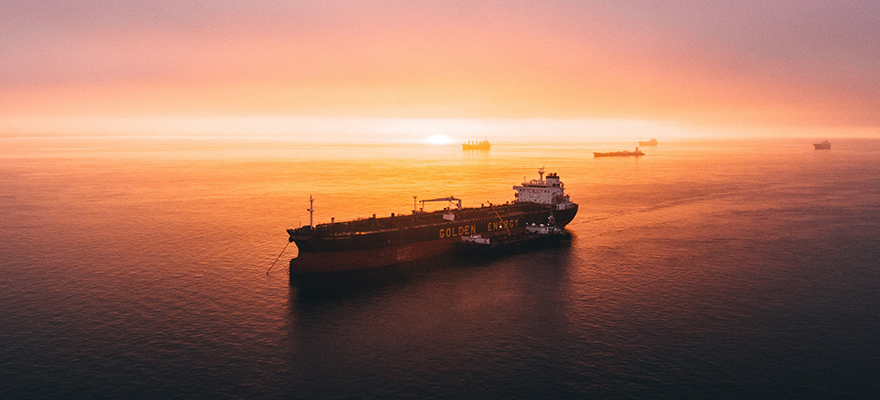Geospatial data and AI are helping ports to manage traffic and processes better, to reduce carbon dioxide output, pollution and fuel-use

Sustainability and greenification are no longer simply nice to have – they are becoming strategic topics in every boardroom. This has been exemplified for the maritime and ports industry from a range of past events where the industry is now moving in the right direction.
On 17 November 2021, cargo ships queuing up at Los Angeles and Long Beach ports were forced to wait 240km outside of the port so emissions from idling ships close to shore would be diluted before reaching the coastline. Usually, they would idle at around 40km outside the port (see Figure 1).
Knowing that cargo ships sometimes wait multiple days before entering the port, there is room for improvement.
Within major ports, degassing of tankers, where remaining vapours are removed from the tanker’s hold between the unloading and loading of two different liquid cargos, is still happening when in transit, resulting in high levels of pollution and annoyance for nearby residents.
New regulations are being implemented to force a greenification of vessel fleets, such as the Carbon Intensity Indicator (CII), a rating for the vessels annual carbon intensity. From January 2023, all vessels that trade internationally and above 5,000 gross tonnages will be subject to new CO2 regulations. To comply, ship owners and operators will have to monitor the performance of their fleet closely and pro-actively to ensure regulations are met.
Thanks to digitalisation and innovation in the maritime and ports industry, the future is looking bright. Vessels are continuously tracked, and engines and performance are increasingly monitored using sensors, Internet of Things devices, and cloud connectivity. Ports use radar systems, AIS receivers, cameras, environmental sensors and digital twin technologies to obtain situational awareness to detect and react in real-time.
Geospatial data plays a pivotal role, and AI is increasingly becoming the engine fuelled by the data to accelerate ports and the maritime industry to a greener future.
Queues and gas
Take the example of vessels queuing at ports. The historical data and the current (global) environmental picture can predict wait times and congestion. They can be accounted for by letting vessels cruise at a slower pace, adapting their ETAs, hence burning less fuel on a voyage and when idling. This is a global optimisation problem, but the data is there through services such as Spire Maritime’s satellite AIS data set.
Or the example of illegal degassing. The pattern of a tanker moving between two locations and trying to get rid of its hold is easily detected using the geospatial location records obtained from the radar or AIS system in the port. This was showcased by Port of Antwerp and xyzt.ai using six months of historical vessel data and unsupervised machine learning. Unsupervised means the algorithm was trained from the data only, without any user intervention necessary to annotate prior data.
Algorithms fused radar, AIS and geospatial data about the location of terminals, locks, etc. xyzt.ai used data-driven algorithms based on k-nearest neighbours, dynamic time warping, and deep learning to identify anomalous vessel movements in Europe’s second major seaport. The algorithms could extract illegal degassing events from hundreds of millions of journeys of historical data. An example is shown in Figure 2, where a tanker performs a “sight-seeing” tour between two close-by stops.
The impact of these improved algorithms can be monitored and analysed using geospatial data such as atmospheric measurement data from, for example, the European Copernicus program. Daily measurements can be visualized and analysed and used as input data for predictive AI models. Figure 3 shows how nitrogen dioxide (NO2) pollution data can be analysed in the xyzt.ai platform using complex queries answering questions such as “Which regions saw the most days with high NO2 levels?”. From the image, it is easily seen that ports such as Port of Rotterdam and Port of Antwerp, the two largest European seaports, significantly impact pollution levels.
The maritime industry and ports worldwide face a significant challenge to reach the increasingly stricter environmental regulations. At the same time, competition for maritime ports is more challenging than ever, and ports need to invest and quickly adapt, not to be qualified poorly or become constrained by the regulations for future expansion.


